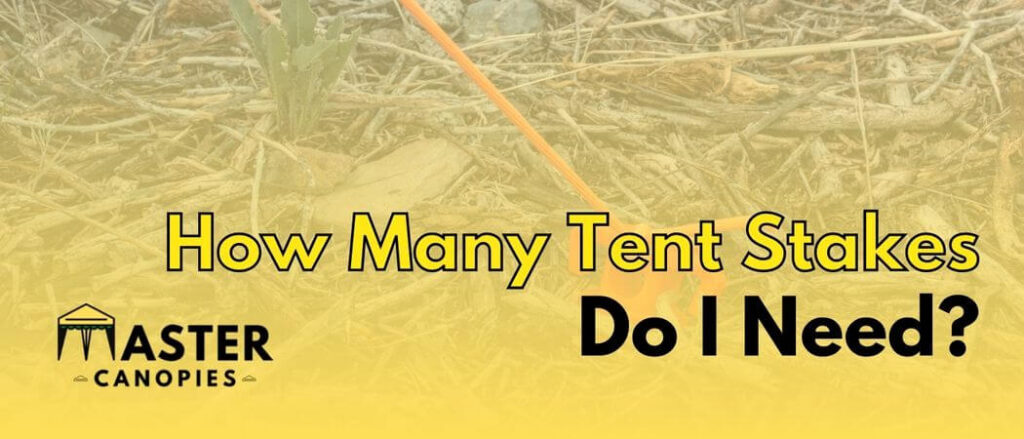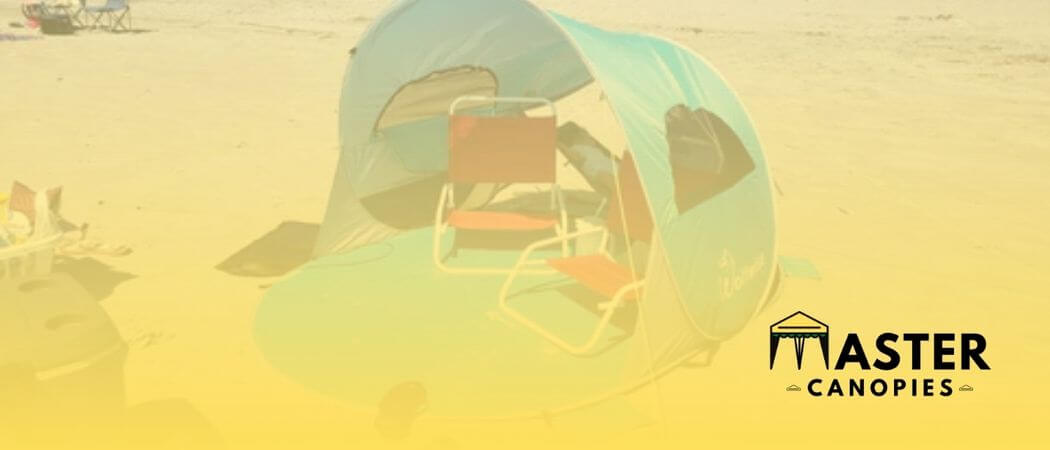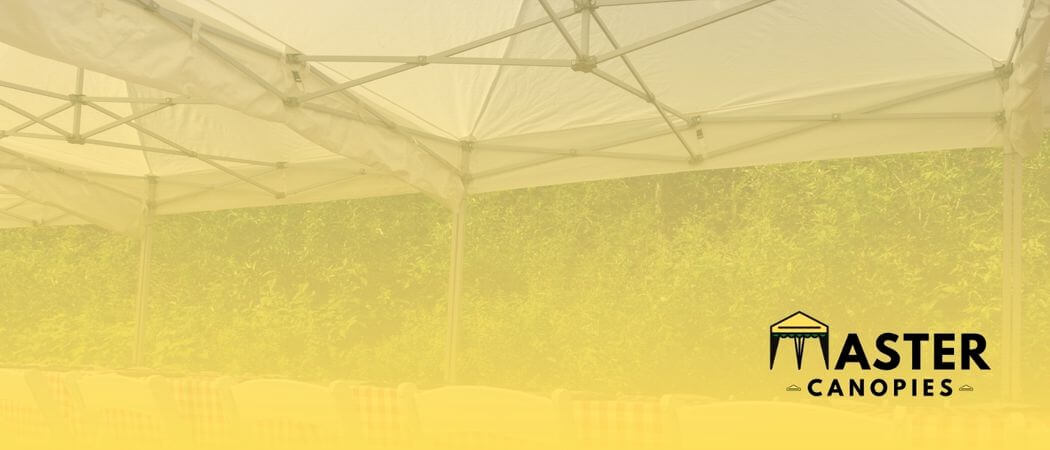
Can You Put a Tent in the Dryer Safely?
Can You Put a Tent in the Dryer Safely? Published February 4th, 2023 by Allen Campbell Well, it’s no secret that a tent is a
Published July 26th, 2022 by Allen Campbell

As you prepare for your next camping trip, one of the most important decisions you’ll make is how to secure your tent. You don’t want it to fly away in the wind or collapse on you in the middle of the night. One method to avoid the problem is by using stakes to secure your tent. But how many stakes do you need? Do you need two stakes? Four stakes? More? How do you know which is the right number for your needs?

Tent stakes are an essential part of the camping experience, providing both stability and protection for your tent. It is the easiest and most speedy method to make sure your tent stays in place. Even the most expensive tent stakes are relatively affordable, making them a great investment for any serious camper or outdoors enthusiast.
Compromising on tent stakes and using rocks or sticks instead will only lead to more problems down the road when the weather takes a turn for the worse. So I would suggest always bringing along some high-quality tent stakes just in case!
There is numerous variation of tent stakes present on the market, each designed for different weather conditions. Cheap plastic stakes may be adequate for calm days, but strong winds or heavy snowfall could cause them to fail. So, it’s important to choose the right type of stake in order to keep your shelter secure.
The Y-like shape of the groundhog stakes offers a lot of holding power, making them the most popular kind. Its unique three-sided Y-beam design allows it to penetrate deeper into the ground, making it ideal for a variety of soil types. Check out this best-selling Groundhog style stake – MSR Groundhog Tent Stake.
V-style stakes are an excellent choice for loose sandy soil, but they don’t work as well in regular compact dirt. It is not capable to hold too much pressure. Snow Rock Tent Stakes (V-style) are available to purchase.
Shephard hooks are usually the cheapest option for tent stakes, but they don’t have a lot of holding power. I would not recommend using only these stakes if you are camping in high winds. But, if you’re looking for something light and durable at a low price point, the TITO Titanium tent stake is a good choice, and make sure to stuff more than one in your bag.
The nail spike-style tent stakes are perfect for any outdoor adventure because of their lightweight and durable design. When it comes to Nail and Spike-style stakes, MSR definitely has the best options on the market. Not only are these stakes incredibly lightweight at only .19 ounces, but they also feature a reinforced head that guarantees durability and longevity.
Screw-shaped tent stakes are popular and easy to install with one hand, but they are not always the best option. The spiral and screw-type design of tent pegs make them ideal for use in compacted sand and firm soil. It is very easy to set these pegs up with just a few turns.
You can find many different materials of tent stakes on the market, but titanium or aluminum stakes are the best value for your money. The titanium and aluminum stakes are stronger than steel or plastic, making them perfect for hammering into the ground in hard-to-reach places without breaking or bending.
Aluminum: In my opinion, aluminum tent stakes are the best option for campers who are just starting out because they are lightweight and strong. You can trust the MSR Groundhog to be a reliable and long-lasting investment for your tent.
Titanium: Personally, I use titanium stakes for my tent because they’re more durable than other materials. If you can spend extra money then I would suggest getting titanium stakes for your own tents. I know it is much more expensive as compared to other materials but it is worth it in the long run.
Steel: Mostly, the steel stakes come with the new tents but they are heavy in the long run if you often plan for backpacking and hiking. It is better to switch to aluminum stakes which are not only light in weight but also as strong as steel.
Plastic: Plastic stakes are just useless and frustrating. They’re too weak to be of any use and just end up breaking. You will end up doing more work on re-staking plastic stakes rather than enjoying your camping. You’re better off looking for something stronger, like an old branch or a wooden skewer.
Tent stakes are the most important companion to your tent when you are camping in any kind of weather. But how many do you really need?
If one of your tent stakes goes missing, you’ll be glad you brought extras. You should carry extra stakes with you so that you have plenty of securing points for your tent. The small device helps you to hold the tent down so that the tent does not blow away in strong winds.
There are a variety of stakes available for purchase depending on your camping destination and needs. For example, if you are a car camper you will have different stake requirements that can handle different types of soil. I recommend you to carry the toolbox if you are doing car camping so that you have access to different types of tools that might come in handy.
On the other hand, if you are backpacking you should carry more than the required amount of stakes. For example, if your tent has 4 corners, you should carry 6 stakes (2 extra). I personally carry titanium stakes (4+2 extra Units) for backpacking because they are strong and lightweight.
Tent stakes are important for securing your tent and preventing it from blowing away in windy conditions. The number of stakes you need will depend on which type of camping you are doing and the type and weight of your tent.
While you may be tempted to use fewer stakes than recommended, using more stakes will help ensure that your tent stays in place. So don’t skimp on the stakes – use as many as you need to keep your tent firmly in place!
Without stakes, large rocks can be used to hold down each corner of the tent and this will ensure that your tent stays sturdier in strong windy conditions. Also, if you have guy lines, tying them around trees or other large objects will give extra stability to your tent. Lastly, if there are no large rocks or trees around, you can use smaller objects like sticks. Be creative and resourceful in order to make sure your camping trip is a success.
Mostly, people are familiar with the tent but they might not know all its parts or what they are called. The anchor points on a tent are typically called “tent pegs.” and you can find these pegs placed on the ground around the perimeters of the tent. The four or more tent pegs help to stretch out and fasten the canvas or nylon material of the tent.
Yes, but if you do your research and pick the right spot, pitching a tent in the rain can actually be quite enjoyable. Just make sure to avoid any areas that might be prone to flooding or have a lot of large trees that could pose a falling hazard. Additionally, a tarp or groundsheet placed under the tent will help keep the bottom of the tent dry, while extra guy lines can be used to secure the tent in case of strong winds.
It is very unpleasant to wake up in the middle of the night and find that your sleeping bag is wet and your tent is full of condensation. Fortunately, there are some ideas you can follow to keep the tent dry on the inside. Firstly, it is important to choose a tent with good ventilation in order to avoid condensation buildup. Look for tent models with mesh panels or vents in the design of the tent to allow for proper air circulation.
The second most important rule for avoiding condensation in your tent is to cook outside. If you must cook inside, be sure to ventilate your tent afterward. The last most important tip is to avoid leaving wet gear inside your tent as it will only make the condensation worse. If you follow these tips, you can help ensure that your tent will stay dry on the inside, no matter what the weather is like outside.

Allen is a full time writer at Mastercanopies.com and enjoys traveling around the United States and exploring nature. He enjoys writing about canopies as he believes they are extremely crucial in having a successful camping trip whether it be a trip to the beach, mountains, or the open plains.

Can You Put a Tent in the Dryer Safely? Published February 4th, 2023 by Allen Campbell Well, it’s no secret that a tent is a

How to Print on a Canopy: How to Print Custom Images/Logos Published February 4th, 2023 by Allen Campbell Do you want to print something special

How to Choose the Best Outdoor Event Flooring for your Next Celebration Published January 31st, 2023 by Allen Campbell Planning an outdoor event can be

How to Insulate a Tent for Winter and Keep Warm Published February 3rd, 2023 by Allen Campbell Is your tent the last frontier when it

Wolfwise Beach Tent Review: Should You Buy It? Published January 23rd, 2023 by Allen Campbell Are you planning a beach vacation but don’t know exactly

How to Start a Tent Rental Business (and have Success with It!) Published January 23rd, 2023 by Allen Campbell Do you have a knack for

Wolfwise Beach Tent Instructions: Easy Setup Guide Published January 23rd, 2023 by Allen Campbell Let’s face it, setting up a beach tent can be tricky…

Best 100×100 Tents for Large Gatherings and Parties Published January 12th, 2023 by Allen Campbell Finding the right tent for your next event can be

Best Tent Rentals in Downers Grove, IL Published January 12th, 2023 by Allen Campbell Hoping to make a big impact in Downers Grove? Well, if

Master Canopies is here to bring you the best canopies for the outdoors so that you can enjoy the fresh air without the gleaming and burning light of the sun.

Master Canopies is here to bring you the best canopies for the outdoors so that you can enjoy the fresh air without the gleaming and burning light of the sun. As an Amazon Associate, we earn from qualifying purchases.